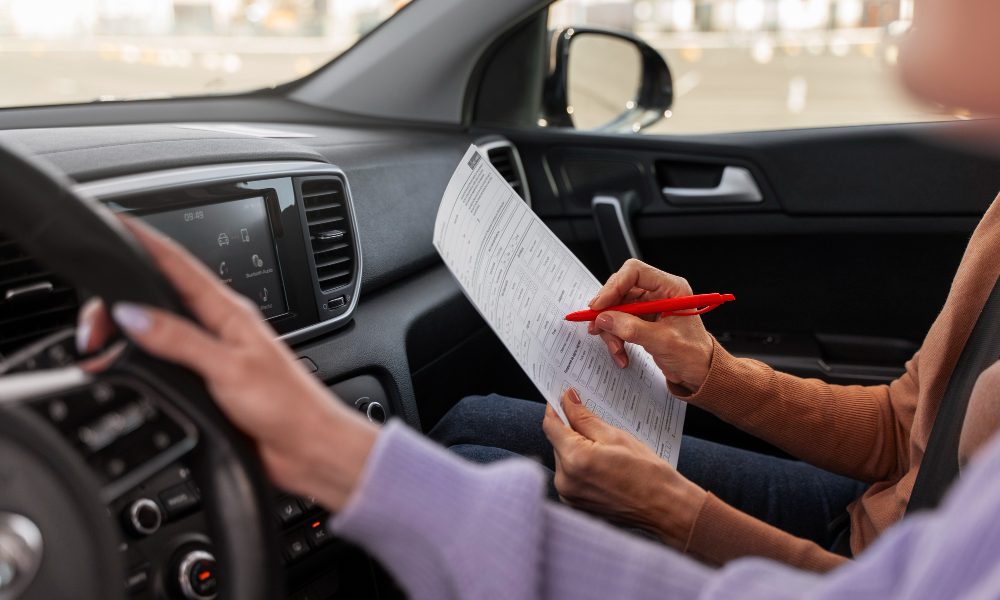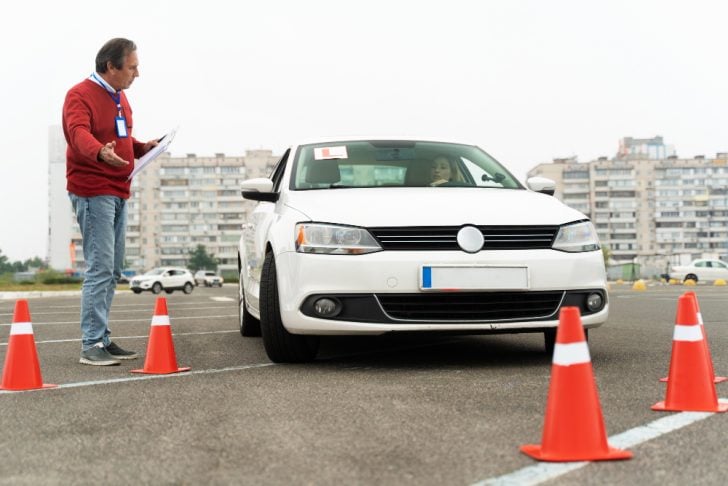
10 Effective Tips for Passing Your Driving Test with Ease

Passing your driving test can seem daunting, but with preparation and confidence, you can achieve success. Each step leading up to the test counts—from studying the Rules of the Road to practicing essential skills. Here are tips to make passing your driving test easier and less stressful.
10 Effective Tips for Passing Your Driving Test
1. Understand the Rules of the Road Thoroughly
A deep knowledge of the Rules of the Road is foundational to passing your test. This guidebook covers the essential laws and safety practices on the road. Reviewing it in detail helps you feel prepared for the theoretical portion of the exam. Familiarity with rules reduces the chance of errors on the road and reassures your examiner of your understanding of driving essentials.
2. Take the Required Driving Lessons
Completing the necessary lessons with a certified instructor strengthens your confidence behind the wheel. It’s advisable to go beyond the legally required 12 lessons if possible. Extra lessons enhance your ability to handle the car under various conditions, preparing you for surprises on the road. Each lesson also builds muscle memory, making essential maneuvers come naturally on test day.

Freepik | Complete the necessary lessons with a certified instructor to strengthen your confidence behind the wheel.
3. Schedule a Pre-Test Session
A pre-test session offers insight into the actual test’s structure, reducing fear of the unknown. In this session, instructors can identify and correct any last-minute habits that might lead to test failure. This rehearsal lets you experience test conditions, helping you feel more in control and focused when the actual exam day arrives.
4. Prepare All Necessary Documents and Vehicle Requirements
Ensure all required documents are in order, including a valid learner permit and insurance disc on the windshield. The car must meet inspection standards, including displaying L plates and having clear visibility from all windows. Check your documentation twice to avoid test-day surprises, as missing items can prevent you from taking the test.
5. Arrive at the Test Center Early
Arriving early allows you time to settle in and adjust to the environment, minimizing stress. Being on time also lets you mentally prepare and focus on the task ahead. Small details, such as wearing appropriate footwear, show the examiner that you’re prepared, attentive, and serious about passing your driving test.
6. Stay Calm and Trust Your Training
Confidence is crucial when taking your driving test. You’ve invested time and effort in learning, so trust your knowledge and instincts. Take deep breaths and remember the guidance from your instructor. Keeping a calm mindset allows you to react effectively to unexpected situations, showcasing your readiness to drive independently.
7. Maintain Awareness of Your Surroundings
Alertness is crucial in impressing your examiner. Staying aware of road signs, pedestrians, and other drivers shows that you can handle distractions safely. Being observant also ensures you won’t miss crucial instructions from your examiner. Focus on the road rather than the examiner, as this helps showcase your skills more naturally.
8. Keep a Safe Distance
Maintaining a safe distance from other vehicles is a fundamental safety principle. A minimum two-second gap ensures that you have ample time to react if the car in front suddenly stops. This distance management demonstrates to the examiner that you prioritize safety over speed, a critical factor in passing the test.
9. Mind Your Driving Technique
Good technique reflects disciplined practice and adherence to best driving habits. Keeping both hands on the steering wheel at the 10-and-2 position, not riding the clutch, and avoiding distractions such as resting your hand on the gear stick are good habits. These small details highlight your awareness of proper technique, reassuring the examiner that you’re serious about road safety.
10. Don’t Worry If You Make a Mistake
Mistakes happen, even to experienced drivers. If you make a minor error, stay calm and focus on the remainder of the test. Dwelling on a mistake can lead to further slip-ups. Remember, the test evaluates your overall driving ability, not just isolated instances.
More inDriving
-
`
How to Safely Drive Away from Wildfires – Essential Tips
Wildfires are unpredictable and dangerous, often spreading rapidly with little warning. A video from the Los Angeles wildfires showed abandoned cars...
February 1, 2025 -
`
Can Your Car Keep You Safe During an Emergency?
Natural disasters such as wildfires, hurricanes, and floods can occur unexpectedly, leaving little time to prepare. In such situations, your car...
January 25, 2025 -
`
Tesla Reveals 2025 Model Y Juniper – Here’s What’s New!
Tesla has revealed the 2025 Model Y Juniper, a refreshed version of its best-selling electric SUV. This update enhances design, comfort,...
January 25, 2025 -
`
How to Check Transmission Fluid for Optimal Car Performance
Maintaining your vehicle’s transmission is just as essential as other routine car maintenance tasks like oil changes or tire rotations. Knowing...
January 18, 2025 -
`
Sutton Foster and Hugh Jackman Spark Romance on L.A. Date Night
Hollywood is abuzz with the latest photographs of Hugh Jackman and Sutton Foster, who appear to be confirming their romance during...
January 16, 2025 -
`
How to Fix Car Window Off-Track and Align It Properly
When your car window gets stuck or misaligned, it’s often due to an off-track issue. Learning how to fix car window...
January 10, 2025 -
`
How to Drive a Stick Shift: A Quick Guide for Manual Beginners
Driving a stick shift requires coordinating the clutch, brake, and accelerator to control a car with a manual transmission. Manual cars...
January 3, 2025 -
`
Why Drowsy Driving Is Just as Dangerous as Drunk Driving
Drowsy driving poses a serious risk to road safety, yet many underestimate its dangers compared to drunk driving. The National Sleep...
December 27, 2024 -
`
Where Is Hyundai Made? A Look Inside Global Manufacturing Hubs
Hyundai vehicles dominate roads worldwide, offering reliability and innovation. Yet, only some people know where these cars are actually made. The...
December 20, 2024
















You must be logged in to post a comment Login